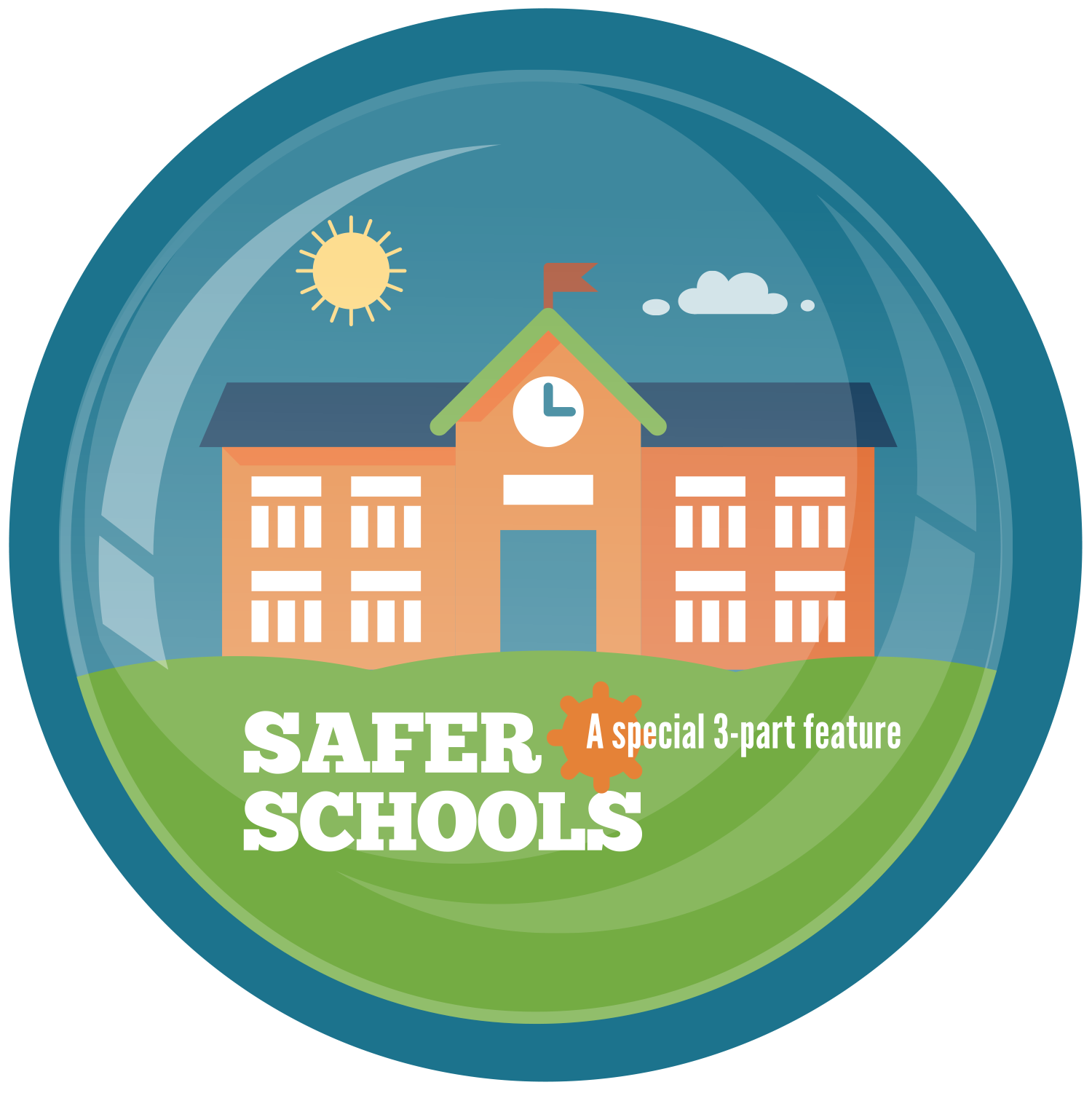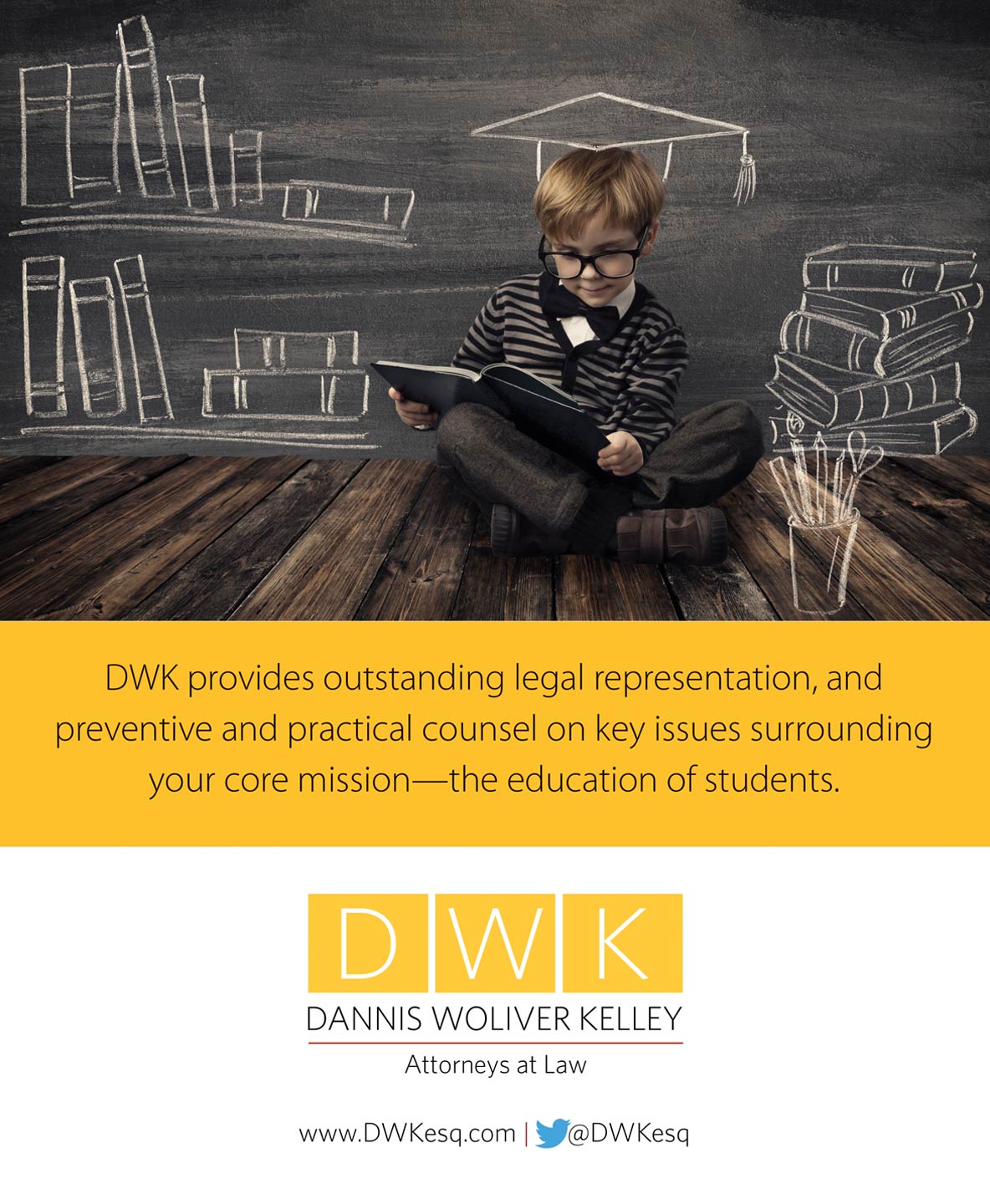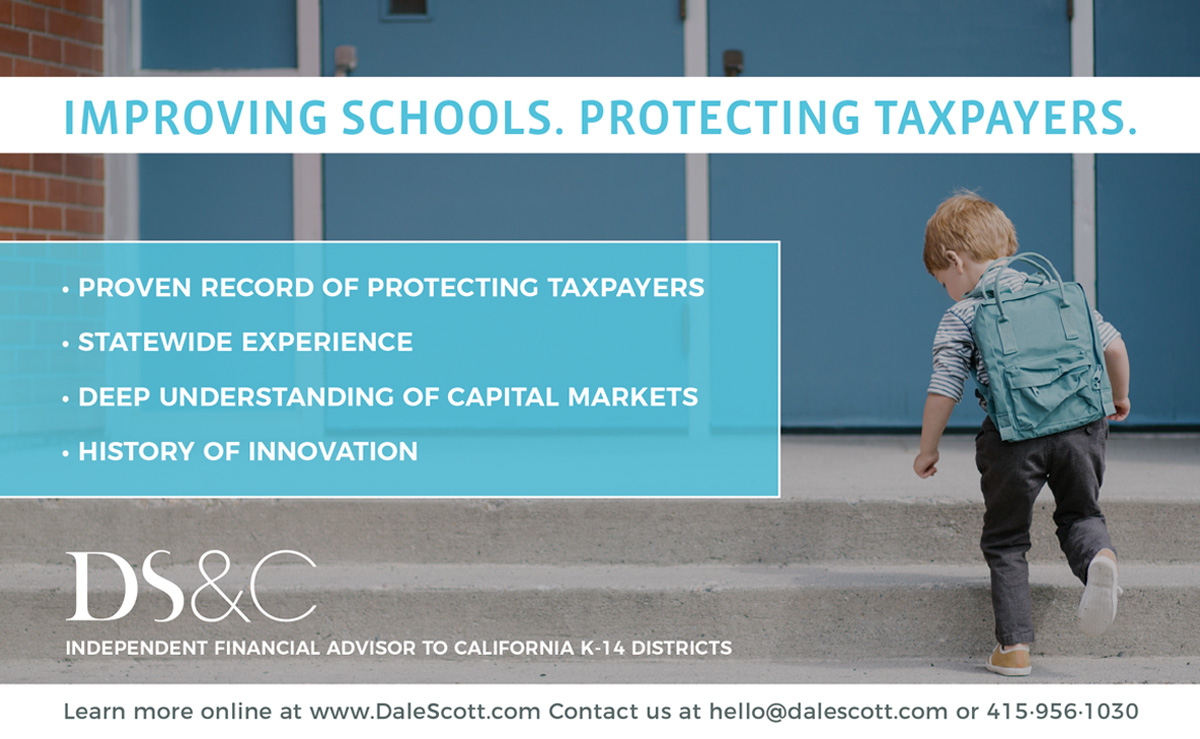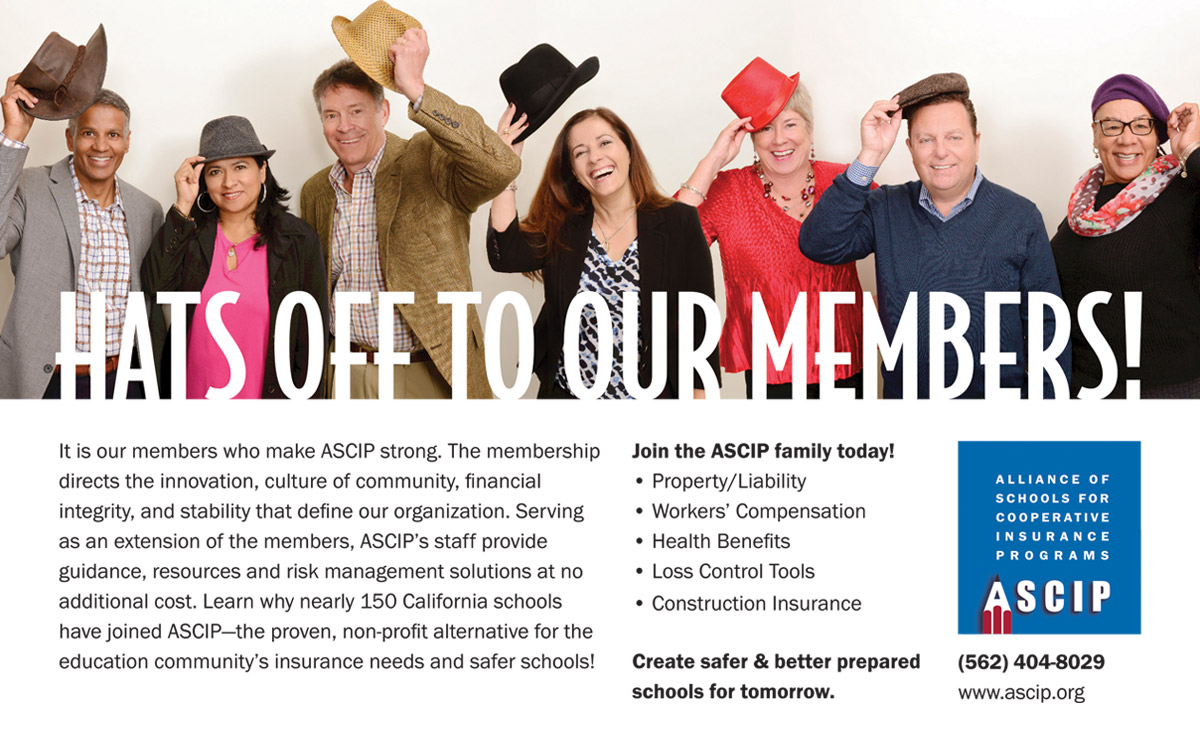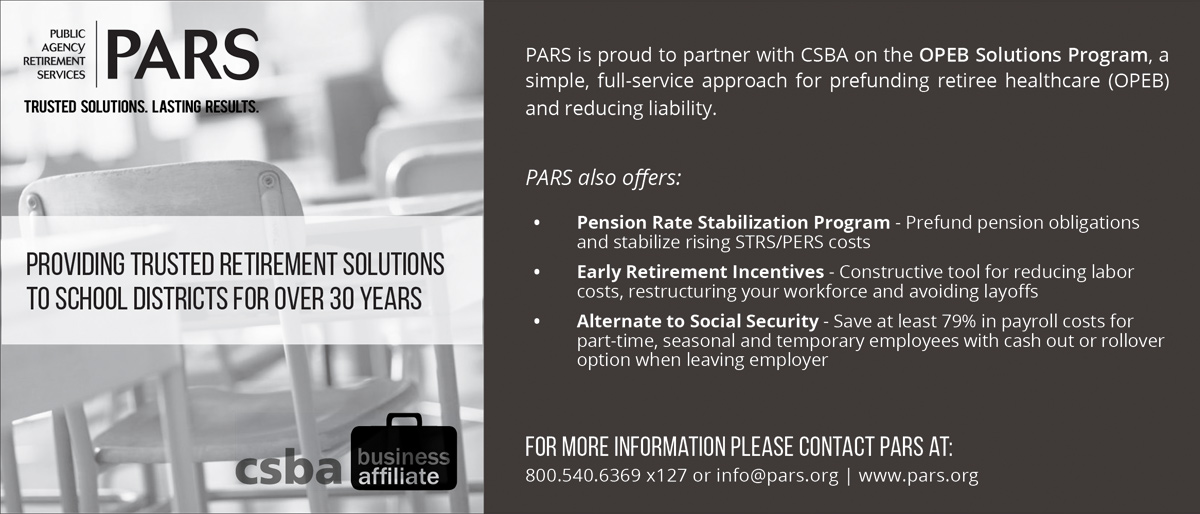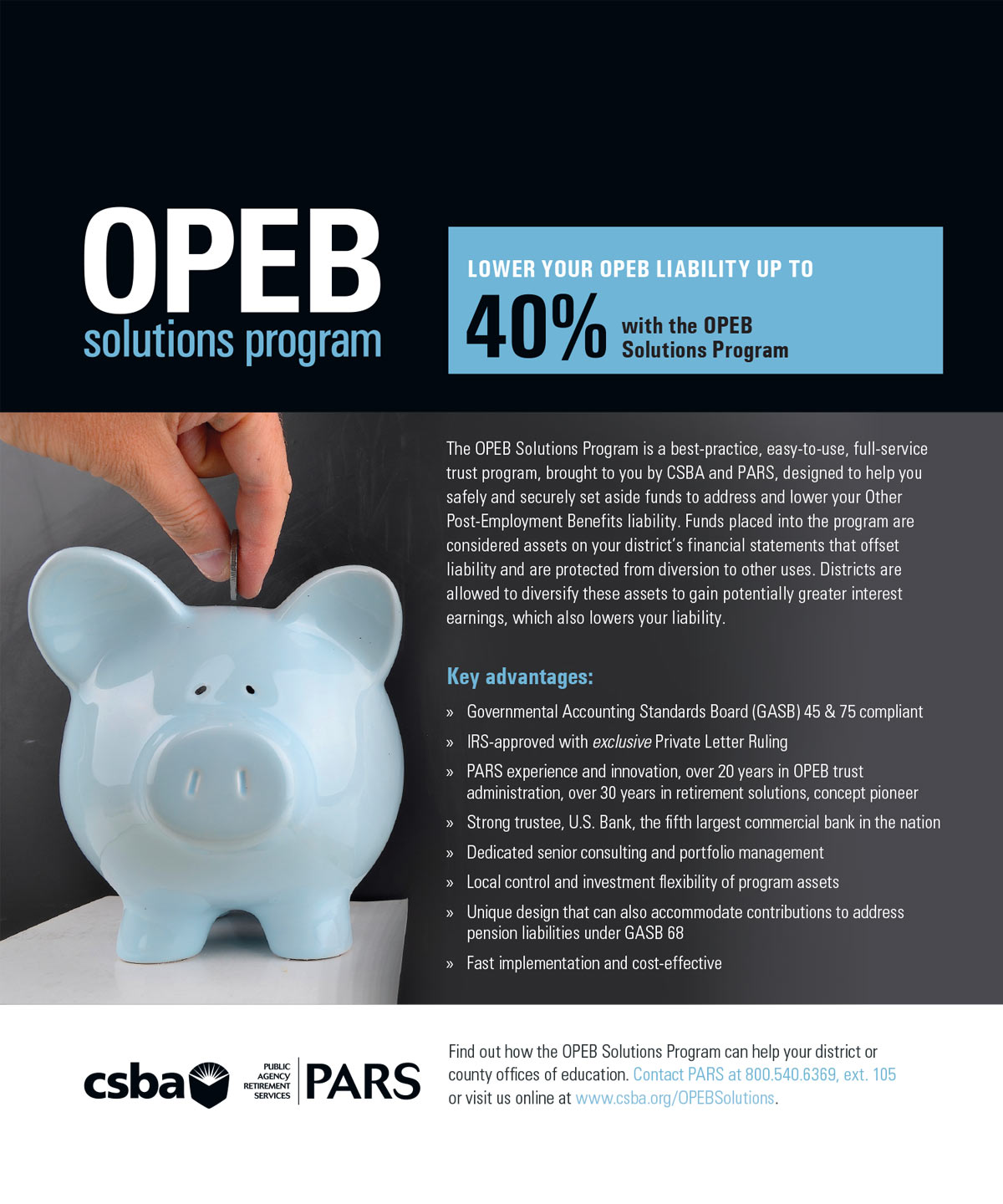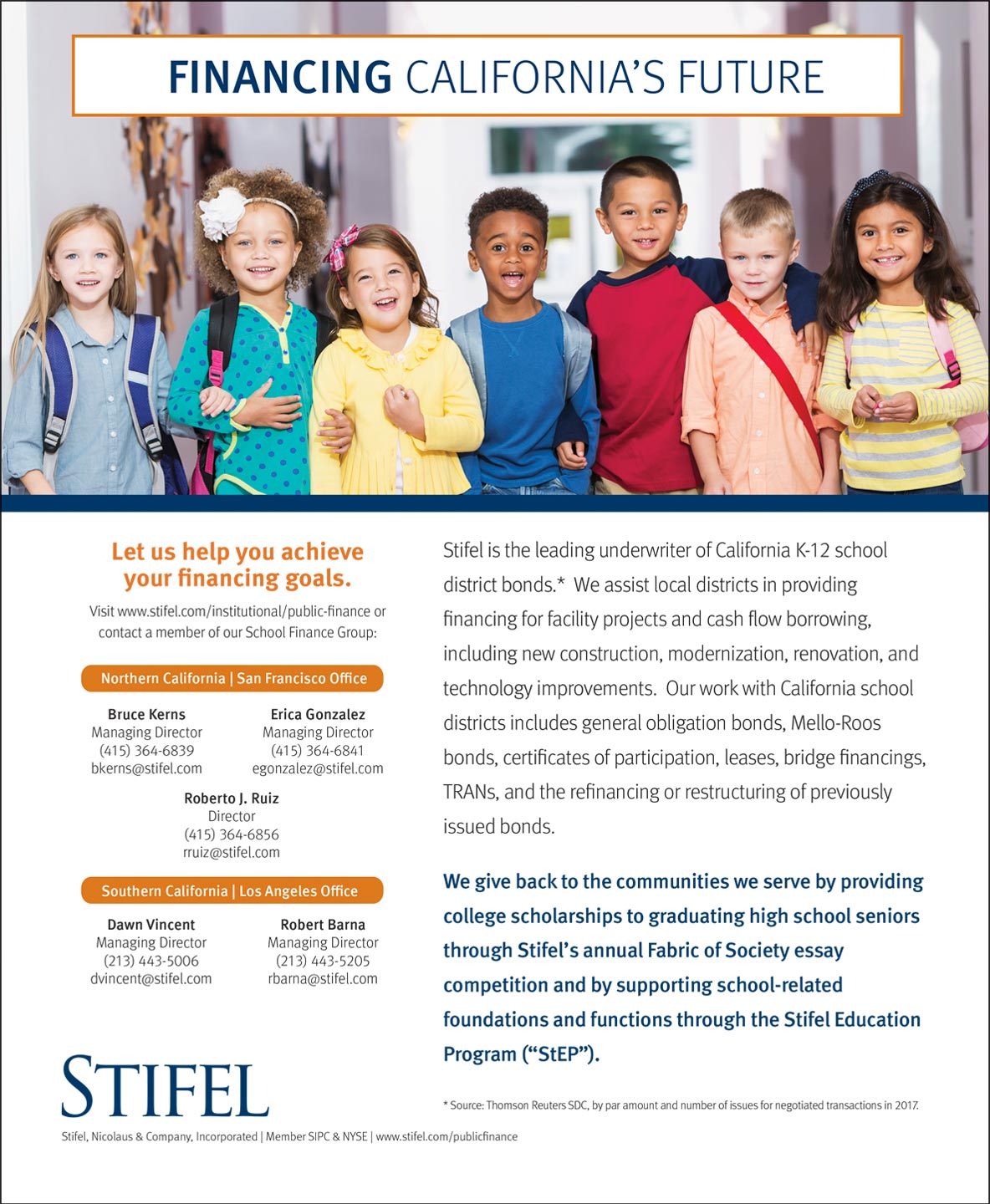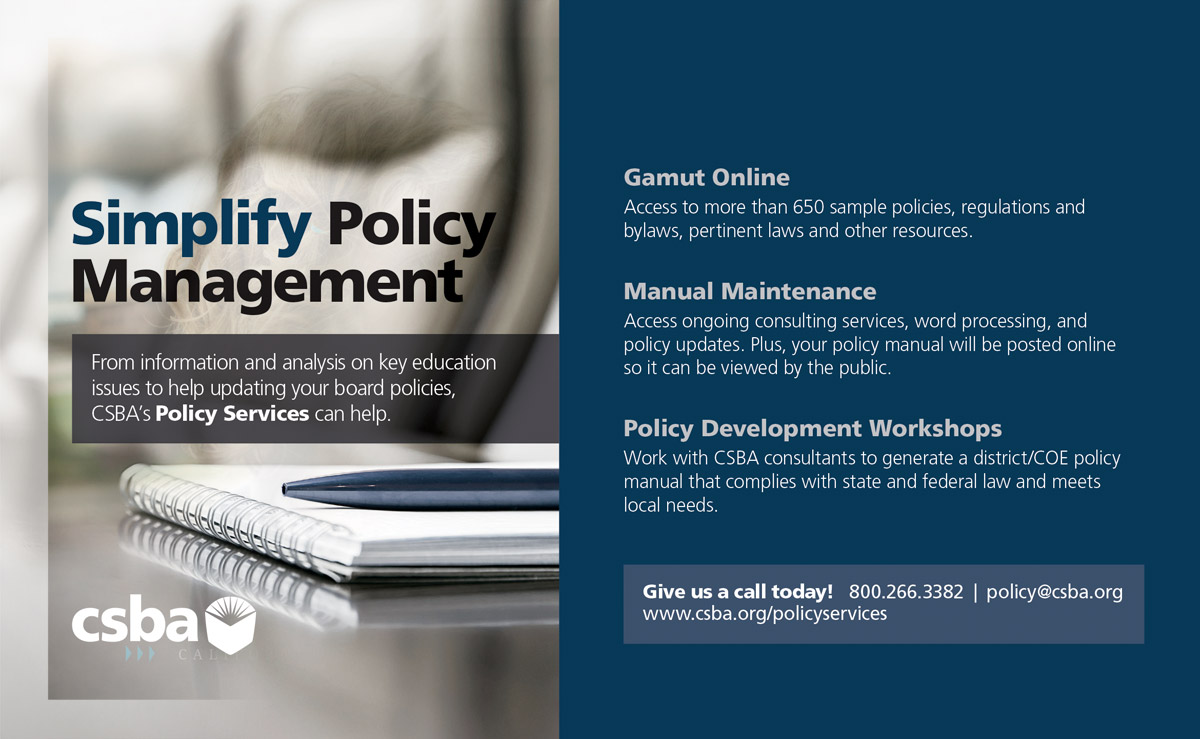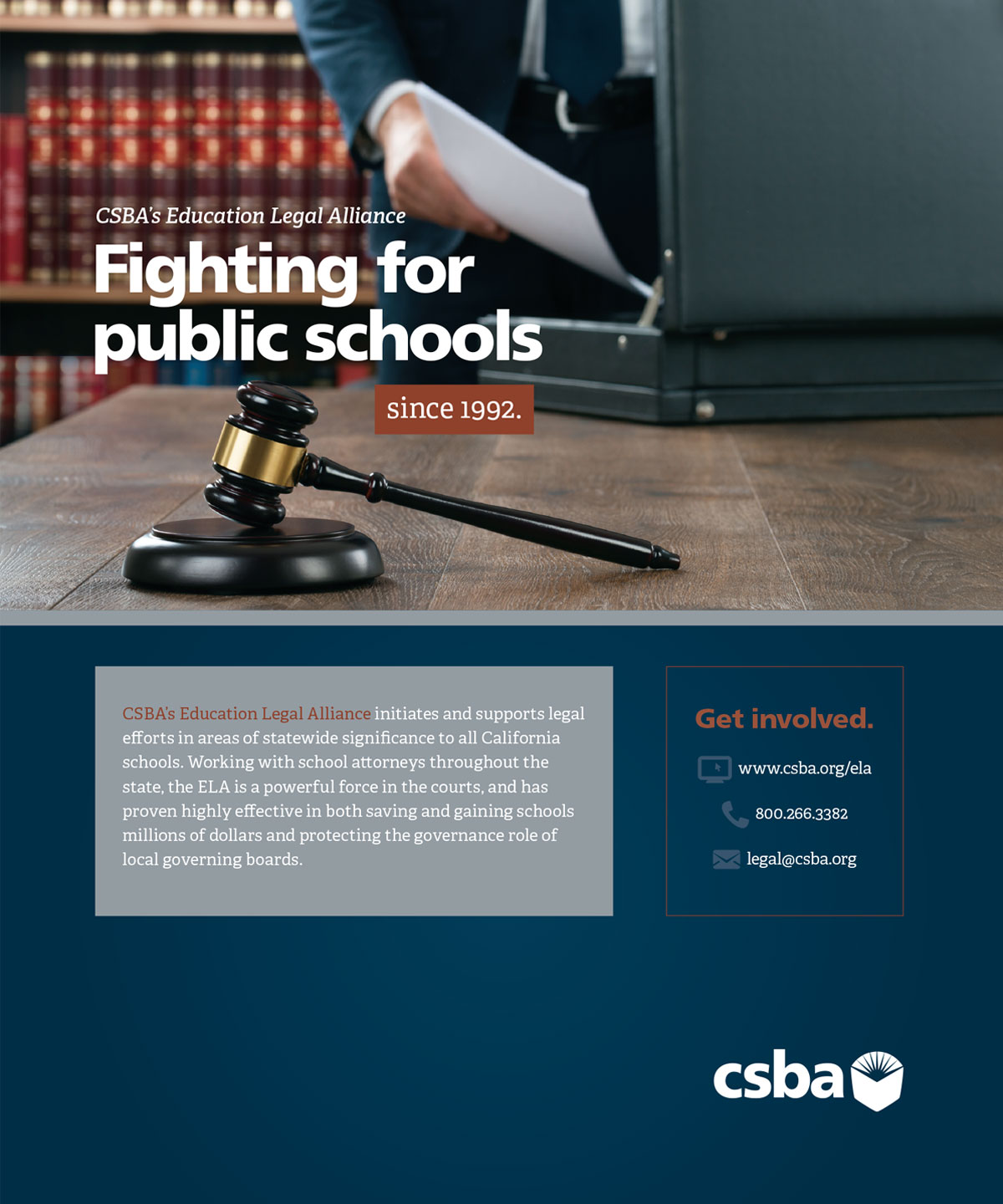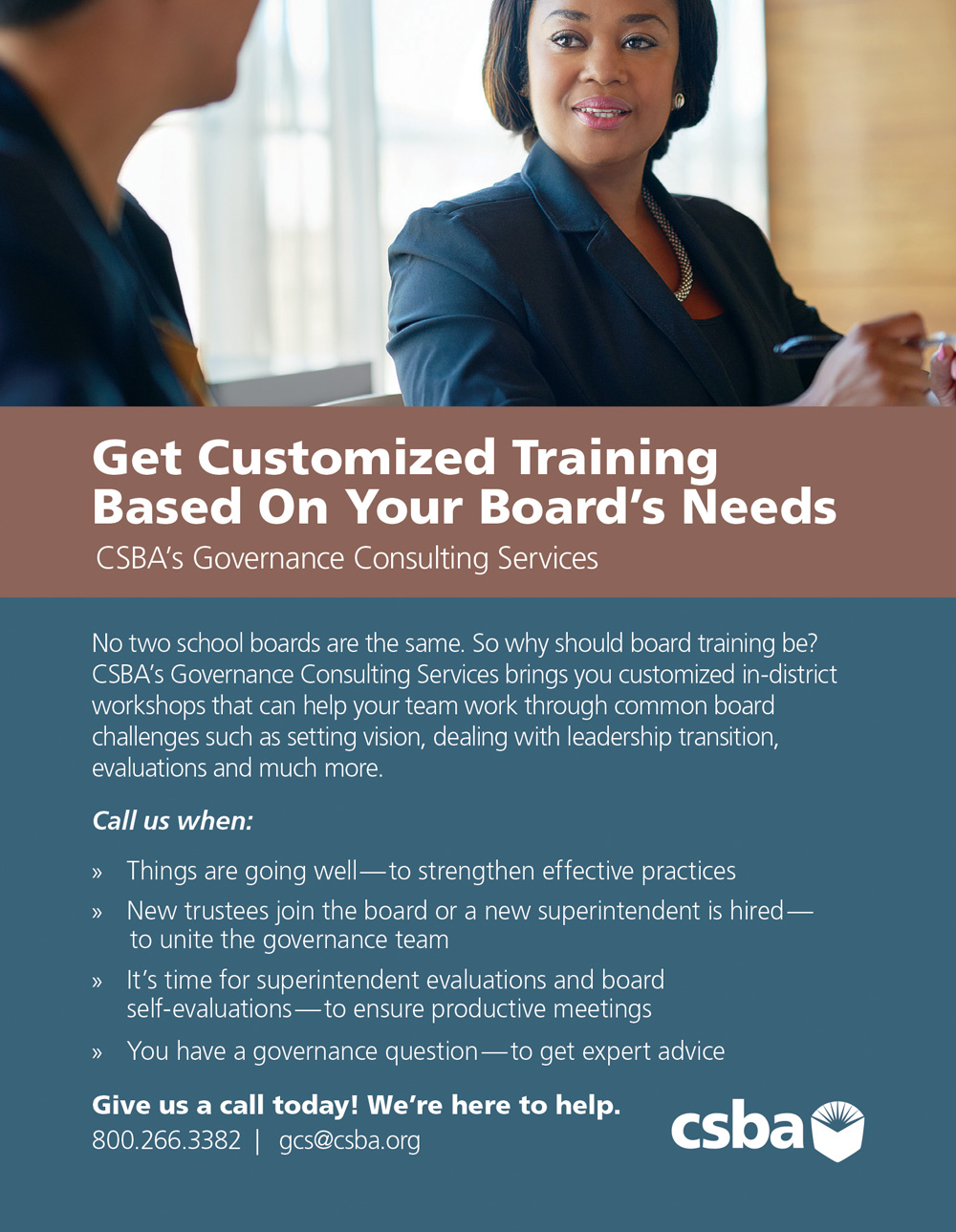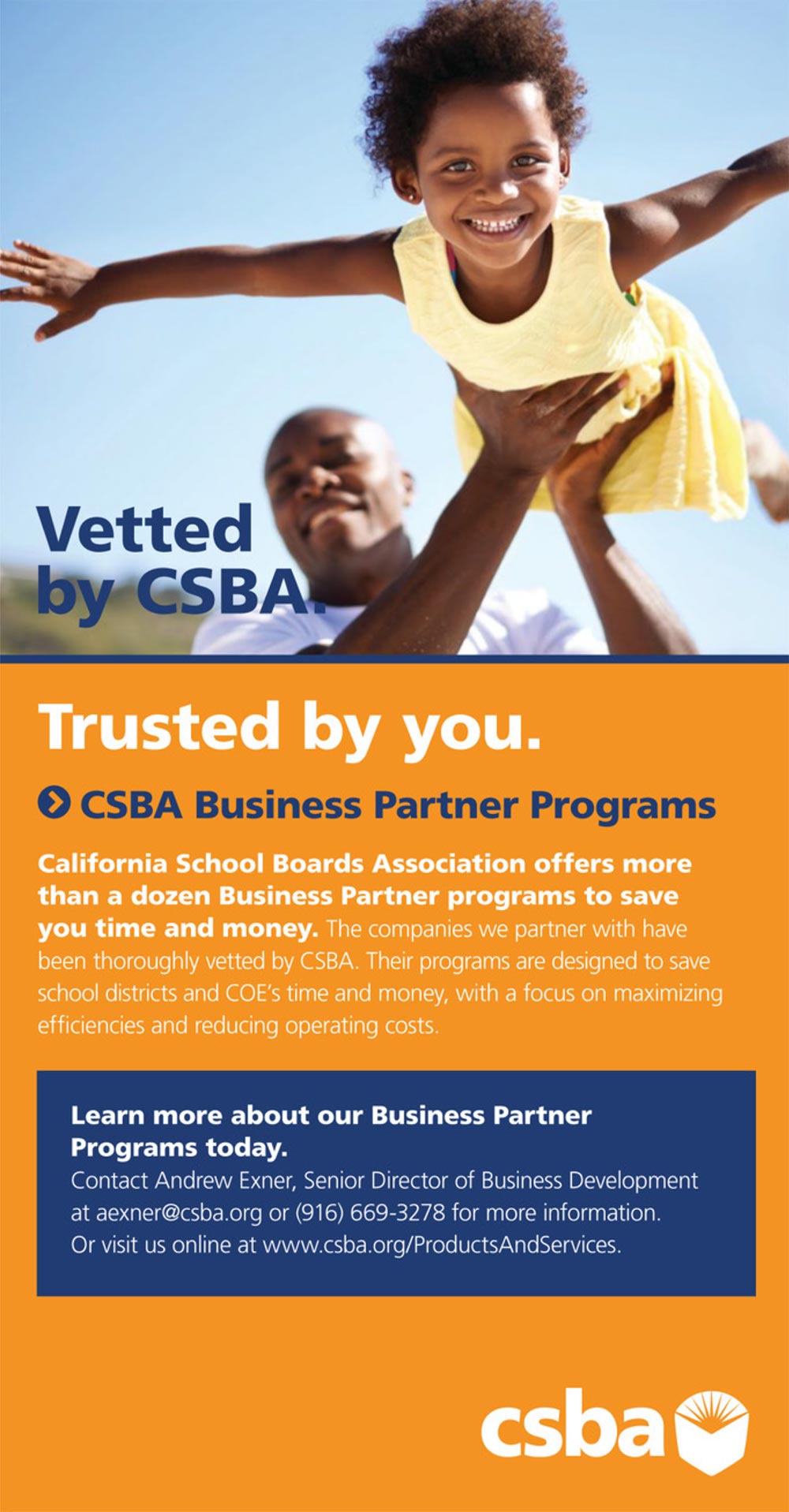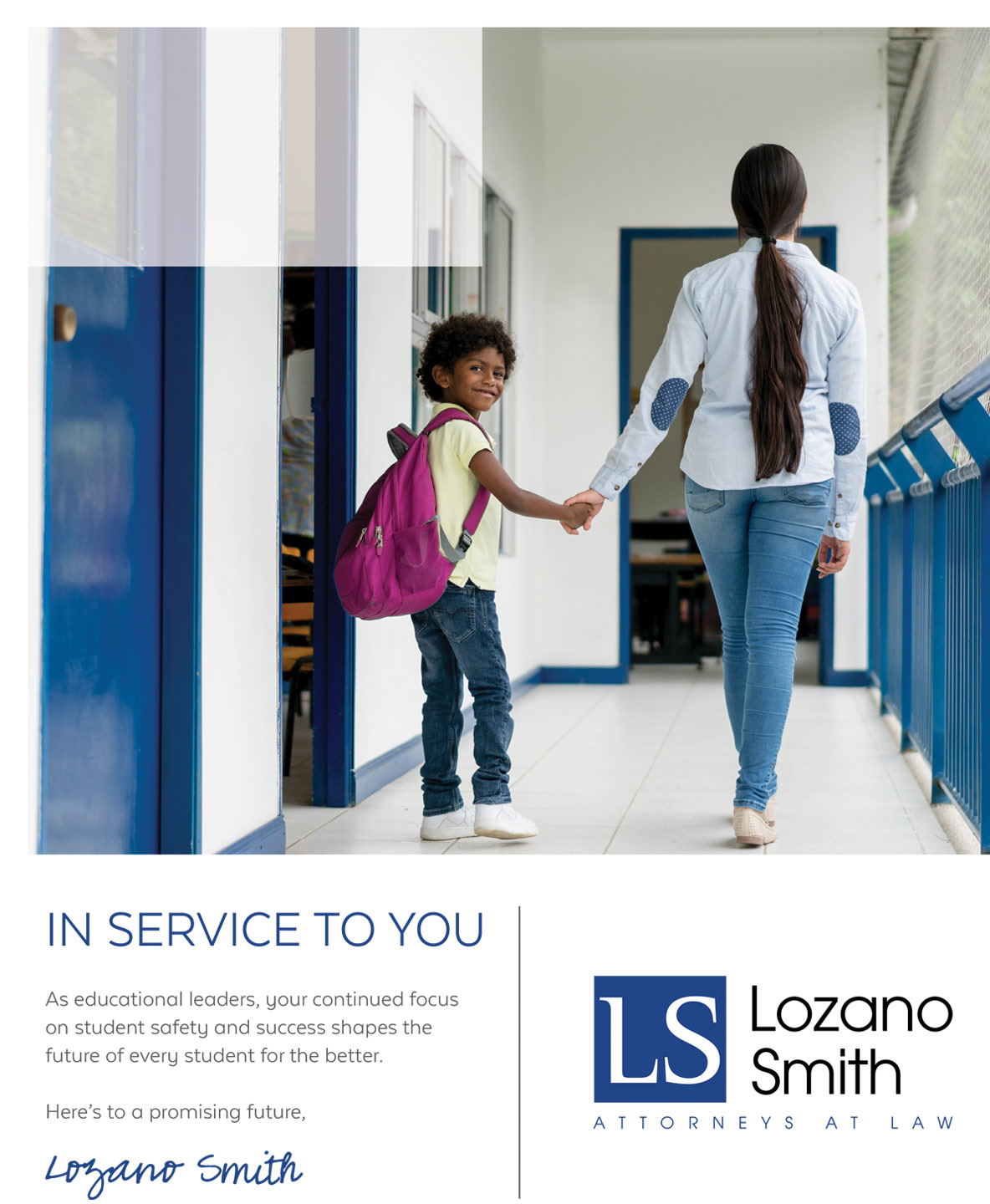
Volume 76, Number 4
Summer 2018
The California School Boards Association is the essential voice for public education. We inspire our members to be knowledgeable leaders, extraordinary governance practitioners and ardent advocates for all students.
Table of Contents
features
by Kimberly Sellery and Hugh Biggar
departments
by Vernon M. Billy
Interview with Silvia Ortega
by Deb Dudley, Luan Burman Rivera and Peggy Wozniak
by Mike Ambrose
by Kate Gerson
by Jill Vialet
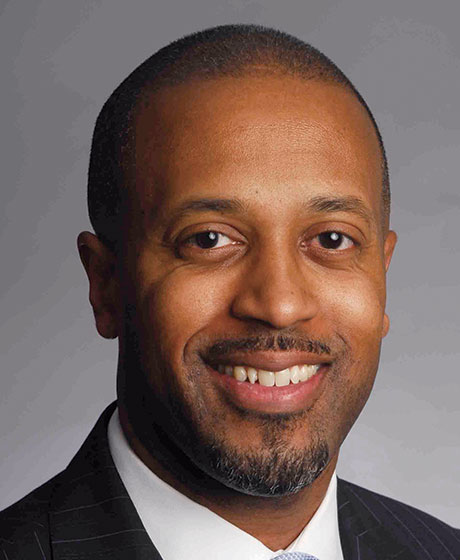
executive director’s note
by Vernon M. Billy
The link between safe schools and Full and Fair Funding
near universal truth about California’s Legislature is that its members are sensitive to hot-button issues, and will always seek to respond in some way, shape or form. If it’s been in the news, there will be a bill about it. You can set your watch to it.
In this edition of California Schools, we discuss in detail the crucial topic of school safety. In 2018, it is impossible to discuss this issue without recognizing how the tragic shooting at Marjory Stoneman Douglas High School in Parkland, Florida, has influenced our thinking and hastened the need to address a wide range of school safety issues. This horrific incident claimed the lives of 17 students, teachers and school staff — only to be followed in May by another shooting at Santa Fe High School in Texas, which took the lives of 10.

CSBA 2018 board of directors
Jennifer Owen
Region 1, Fort Bragg USD
Sherry Crawford
Region 2, Siskiyou COE
A.C. “Tony” Ubalde, Jr.
Region 3, Vallejo City USD
Paige Stauss
Region 4, Roseville Joint Union HSD
Alisa MacAvoy
Region 5, Redwood City ESD
Darrel Woo
Region 6, Sacramento City USD
Yolanda Peña Mendrek
Region 7, Liberty Union HSD
Matthew Balzarini
Region 8, Lammersville Joint USD
Tami Gunther
Region 9, Atascadero USD
Susan Markarian
Region 10, Pacific Union ESD
Suzanne Kitchens
Region 11, Pleasant Valley SD
William Farris
Region 12, Sierra Sands USD
Meg Cutuli
Region 15, Los Alamitos USD
Karen Gray
Region 16, Silver Valley USD
Katie Dexter
Region 17, Lemon Grove SD
Wendy Jonathan
Region 18, Desert Sands USD
Albert Gonzalez
Region 20, Santa Clara USD
Kelly Gonez
Region 21, Los Angeles USD
Keith Giles
Region 22, Lancaster ESD
Helen Hall
Region 23, Walnut Valley USD
Donald E. LaPlante
Region 24, Downey USD
Shelly Yarbrough
Director-at-Large American Indian, Val Verde USD
Robert Gin
Director-at-Large Asian/Pacific Islander,
Alhambra USD
Bettye Lusk
Director-at-Large African American,
Monterey Peninsula USD
Heidi Weiland
Director-at-Large County, El Dorado COE
Kathryn Ramirez
Director-at-Large Hispanic, Salinas Union HSD
Bruce Dennis
CCBE President, Riverside COE
Frank Pugh
NSBA President, Santa Rosa City Schools
Micah Ali
NSBA Director, Compton USD
Chris Ungar
NSBA Director, San Luis Coastal USD
How long have you been a board member?
I became the first Latina board member to be elected to Jurupa USD in December 2016.
Who inspires you as an adult?
Without a doubt, children! The teachings they can offer us adults are truly priceless. I am certain that children are our future, and that gives me a lot of hope. Because of that, I wake up every morning to live out my motto, “Together, we can be the positive impact in a child’s life and change future generations to come.”
Who has been one of your favorite teachers and why?
My first-grade teacher who taught me more than just academics, she taught about emotional stability as it was the first year my twin brother and I were separated [in different] classrooms. Also, my eighth-grade teacher who helped me break out of my shell during classroom presentations, and as a result, thanks to her mentorship, I became a youth leader and the first in my family to attend college.
Who was the one adult you looked up to as a child and why?
My mother, with seven children. I still think back and have no idea how she did it. My mother taught me important core values and the most important one is about unconditional love. Growing up, I viewed my mom as a superhero and still do.
What inspired you to become a board member?
This is home. I was raised in Jurupa Valley all my life, a product of the same school district. My greatest inspiration has been youth, philanthropy and community connection. I am committed to helping youth grow up to be leaders and achieve success, and my favorite inspirational quote to tell them is one of my own, “If I got expelled from school, came back and graduated, so can you.”
List three books that left a lasting impression on you.
The Bible (Book of Job), The Ultramind Solution by Mark Hyman and Feeling Good by David Burns
What advice do you have for new or aspiring board members?
Do it, run, and if possible establish a grassroots campaign. Learn from your community, don’t only get involved, get engaged. Don’t only collaborate, become an agent of change through partnerships. Everything starts in the local level and our communities are in desperate need of fair representation in local governments for women and men of color. Mentorship is an art, don’t be afraid to ask for help and guidance, most especially if you are a trusted member in your community. Work with your heart and stay HUMBLE.
Would you like to participate in an upcoming Member Profile? Contact us at editor@csba.org.


How long have you been a board member?
I became the first Latina board member to be elected to Jurupa USD in December 2016.
Who inspires you as an adult?
Without a doubt, children! The teachings they can offer us adults are truly priceless. I am certain that children are our future, and that gives me a lot of hope. Because of that, I wake up every morning to live out my motto, “Together, we can be the positive impact in a child’s life and change future generations to come.”
Who has been one of your favorite teachers and why?
My first-grade teacher who taught me more than just academics, she taught about emotional stability as it was the first year my twin brother and I were separated [in different] classrooms. Also, my eighth-grade teacher who helped me break out of my shell during classroom presentations, and as a result, thanks to her mentorship, I became a youth leader and the first in my family to attend college.
Who was the one adult you looked up to as a child and why?
My mother, with seven children. I still think back and have no idea how she did it. My mother taught me important core values and the most important one is about unconditional love. Growing up, I viewed my mom as a superhero and still do.
What inspired you to become a board member?
This is home. I was raised in Jurupa Valley all my life, a product of the same school district. My greatest inspiration has been youth, philanthropy and community connection. I am committed to helping youth grow up to be leaders and achieve success, and my favorite inspirational quote to tell them is one of my own, “If I got expelled from school, came back and graduated, so can you.”
List three books that left a lasting impression on you.
The Bible (Book of Job), The Ultramind Solution by Mark Hyman and Feeling Good by David Burns
What advice do you have for new or aspiring board members?
Do it, run, and if possible establish a grassroots campaign. Learn from your community, don’t only get involved, get engaged. Don’t only collaborate, become an agent of change through partnerships. Everything starts in the local level and our communities are in desperate need of fair representation in local governments for women and men of color. Mentorship is an art, don’t be afraid to ask for help and guidance, most especially if you are a trusted member in your community. Work with your heart and stay HUMBLE.
Would you like to participate in an upcoming Member Profile? Contact us at editor@csba.org.

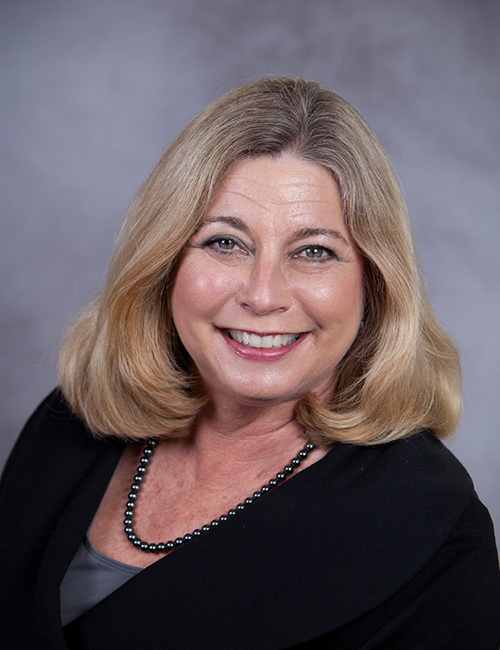
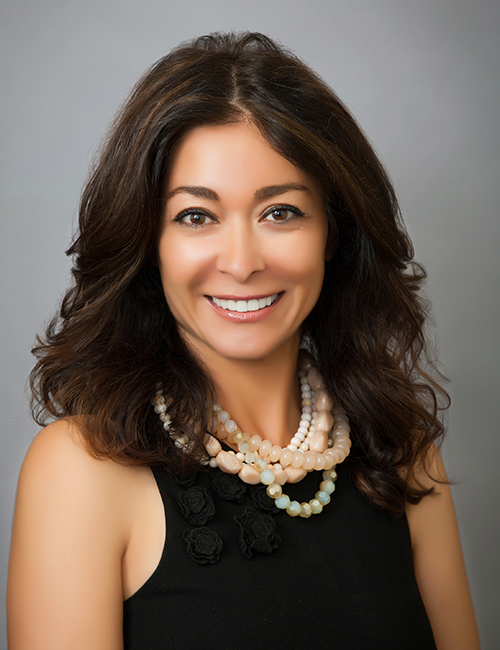
BoardWise
by Deb Dudley, Luan Burman Rivera and Sepideh Yeoh
BoardWise is a forum for board members and superintendents across the state to share questions about governance and board–superintendent relations. Send your questions to boardwise@csba.org.
This year, in addition to our column regulars, Deb Dudley and Luan Burman Rivera, we are welcoming new consultants throughout the year. This issue features Sepideh Yeoh, a board member in the Oak Park Unified School District. Previously, Sepideh worked as an administrator/adjunct faculty at the University at Buffalo and Hilbert College in Upstate New York. Her newest book, GLOW: Be the Light of Your Own Journey, was published in November 2017. Sepideh and her husband run a technology consulting firm in Oak Park, California.
Evaluating your superintendent
Dear BoardWise,
Not long ago, our board evaluated our superintendent. I am new to the board and the process of evaluating an employee as a member of a five-member team. I don’t feel entirely confident that we have used the best process. Does CSBA have any guidance on the process of superintendent evaluation?
Sepideh: You have raised a very good question, which I’m certain many board members have but may not feel comfortable asking.
The superintendent evaluation is crafted based on your district’s shared core beliefs, vision and mission statement and it serves as a model for your district’s evaluation process of all employees.

Senior Director of Communications
Troy Flint, tflint@csba.org
Managing Editor
Kimberly Sellery, ksellery@csba.org
Marketing Director
Serina Pruitt, spruitt@csba.org
Staff Writers and Contributors
Hugh Biggar, hbiggar@csba.org
Corrie Jacobs, cjacobs@csba.org
Aaron Davis, adavis@csba.org
Graphic Design Manager
Kerry Macklin, kmacklin@csba.org
Senior Graphic Designer
Carmen Rodriguez, crodriguez@csba.org
Circulation and Advertising
csba@csba.org
CSBA OFFICERS
President
Mike Walsh, Butte COE
President-elect
Emma Turner, La Mesa-Spring Valley SD
Vice President
Xilonin Cruz-Gonzalez, Azusa USD
Immediate Past President
Susan Henry, Huntington Beach Union HSD
CEO & Executive Director
Vernon M. Billy
California Schools (ISSN 1081-8936) is published quarterly by the California School Boards Association, Inc., 3251 Beacon Boulevard, West Sacramento, CA 95691, (916) 371-4691. $2 of CSBA membership dues goes toward the subscription to California Schools magazine for each board member and superintendent. The subscription rate for each CSBA nonmember is $20. Periodicals postage paid at West Sacramento, CA and at additional mailing office. Postmaster: Send address changes to California Schools, 3251 Beacon Blvd., West Sacramento, CA 95691.
Articles submitted to California Schools are edited for style, content and space prior to publication. Views expressed are those of the authors and do not necessarily represent CSBA policies or positions. Articles may not be reproduced without written permission of the publisher. Endorsement by CSBA of products and services advertised in California Schools is not implied or expressed.

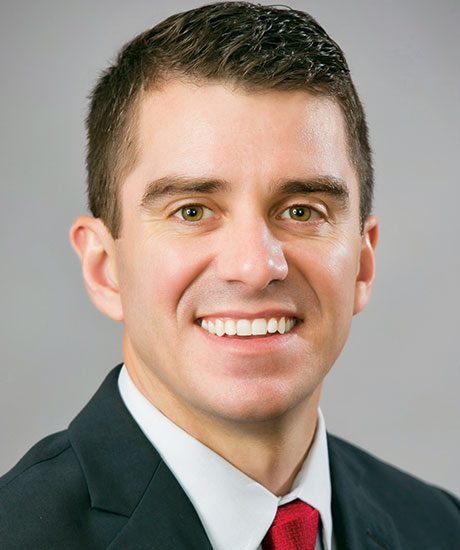
legal insights
BY MIKE AMBROSE
Student Expression and the First Amendment
very year, schools in California face questions about student speech and a school’s ability to discipline students or regulate that speech. Student actions ranging from politically meaningful to seemingly inane can implicate students’ constitutional rights to free expression, which schools must balance against the potential disruption to student learning.
Several Supreme Court cases along with California’s Education Code create guidelines for school districts to balance students’ rights to expression with the potential for disruption of the educational environment.
The U.S. Supreme Court ruled in 1969 in Tinker v. Des Moines Independent Community School District, 303 U.S. 503 (1969), that the First Amendment applied to public schools, and schools could not censor student speech that did not disrupt the educational process. The Court found that the students’ black armbands protesting the Vietnam War were not disruptive, and famously wrote that students do not “shed their constitutional rights to freedom of speech or expression at the schoolhouse gate.”
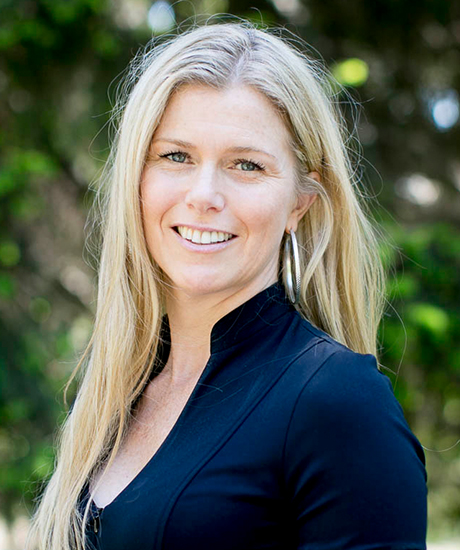
from the field
By Kate Gerson
A path to more equitable schools
ur education system is inequitable. I raise this uncomfortable topic as a former teacher and principal. As the daughter of teachers. As someone who is deeply connected to and loves education. As someone who is white.
Our system is set up to fail some of our students, particularly black, Latino and poor students. Yes, we inherited this system and all of its past wrongdoings, but now we make the decisions. What happens to students in our schools and communities can’t be blamed on a faceless, immovable “system” any longer. We are the system now. The higher dropout rates among Latino students, higher rates of discipline among black students, and the gap in academic performance that follows racial lines; these are outcomes from a broken system that we lead.
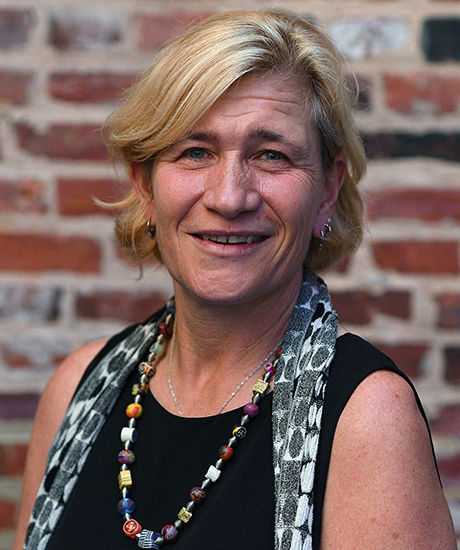
csba at issue
by Jill Vialet
California elementary schools transform through the power of play
ith just nine days left of school, David T. Hoffman, principal of the New River Elementary School in Norwalk, Calif., did not want to jinx himself, but he was quite pleased to note that there had not been any suspensions this year among the 400 K-5 students in the school.
“Disciplinary issues have gone down significantly,” Hoffman said proudly. ”There’s been a noticeable difference of kids coming into my office after recess because of incidents on the playground.”
What he observes at recess is that students are respectfully playing games with one another. “They get along better. Their ability to handle issues on their level has greatly increased. You can see it tangibly on the playground,” said Hoffman. As a seasoned educator at this school and others, Hoffman has seen that the playground can be a stage for conflict. At New River Elementary School, which serves a diverse student population, students are practicing high level social-emotional learning skills that translate into more harmony inside the classrooms and readiness to learn.
class act: Best practices in action
class act:
Best practices in action
class act:
Best practices in action
Positive behavioral interventions help students succeed at Ascend Academy
ust south of Bakersfield, at a Southern Kern Unified School District school, a student with a history of cutting and other forms of self-harm ran off campus. Administrator Katie Notterman gave chase and the student responded by screaming at her. Notterman remained calm, reassuring the student that it was okay to yell and to be angry rather than to cut herself to express her sadness and frustration. The student eventually calmed down and returned to class.
This supportive approach reflects the innovative philosophy of the Ascend Academy, which uses a school-wide Positive Behavioral Intervention and Supports system where students learn how to modify their own behavior through self-regulation and reflection. Faced with a growing number of behaviorally challenged students, Southern Kern USD launched the academy in 2013 as a small morning-only classroom, and has since expanded to a full-day program that is available for all Southern Kern USD students.

Safer 
Schools
Safer Schools

School shootings at these locations, among others, have made headlines from 1999 through 2018. Each time another tragic shooting occurs, a flurry of media coverage around the incident ensues, heated debates about the place of guns in our society occur and discussions around prevention and safety concerns in schools take precedence. These discussions often center around one aspect of school safety, whether that be physical measures, examining disciplinary practices or banning certain weapons. However, research shows that it is important to approach school safety from a broad-based perspective — addressing a range of preventative and safety measures both at individual schools as well as at a district level. This special section of California Schools aims to give a broad overview of three approaches that schools, districts and counties can take to work together to reduce incidences of school violence and create safe and supportive school environments that address the needs of all students

“ Ensuring a safe school environment for California’s students is of the utmost importance and contributes to their academic, social and overall success in college, career and civic life,” said CSBA CEO & Executive Director Vernon M. Billy. “Board members can set district and county office of education bylaws and policies that pave the way to safety for their schools and optimal outcomes for their students.”
 The First
The First
Step is
Prevention
How Safe and Supportive School Environments Deter School Violence
BY KIMBERLY SELLERY
 The First
The First
Step is
Prevention
How Safe and Supportive School Environments Deter School Violence
BY KIMBERLY SELLERY

of the most important measures for preventing violent incidents in schools is one that is often overlooked — creating a safe and supportive school environment through a focus on improving social and emotional health. In 2014, The National Center on Safe Supportive Learning Environments, in partnership with the U.S. Department of Education, released three guiding principles for improving school climate and safety: create a positive climate and focus on prevention; develop clear, appropriate and consistent expectations and consequences; and ensure fairness, equity and continuous improvement. To underscore just how integral social-emotional learning (SEL) is to school safety, the California Department of Education in February of this year also released a set of guiding principles for teaching social and emotional skills that reflect these same categories.
“People think of climate and social-emotional learning as long-term prevention, but I would argue that it’s actually the strongest form of weapon reduction and violence intervention that we have,” said Ron Avi Astor, an expert in school safety and professor of school behavioral health at the University of Southern California. “Students know about this stuff earlier and experience it on school grounds on a regular basis. Unless you have a positive, caring setting that’s supportive, they won’t come forth and you won’t know about it.”
 Threat
Threat
Assessment
Protocol
An Important Step to Prevent School Violence
BY HUGH BIGGAR
 Threat
Threat
Assessment
Protocol
An Important Step to Prevent School Violence
BY HUGH BIGGAR
a spring afternoon this year, school safety expert Amy Klinger sorted through online news stories and social media posts using such search terms as ‘gun threats’ and ‘bomb threats.’ On Instagram, she came across one gun violence threat against a school that had been shared more than 120,000 times.
For Klinger and other school safety professionals, that threat was just one of the many that spiked in the days and months following a deadly mass shooting at a Parkland, Fla. high school in February 2018. School leaders who are now facing an increase in such threats are grappling with how to best assess them and trying to stay ahead of a potentially serious incident.
Klinger’s organization, the Ohio-based Educator’s School Safety Network, is one of only a few that are tracking information related to threats of campus violence. As of May, the Educator’s School Safety Network found that, in the first four months of 2018, there were roughly 1,500 threats of violence impacting more than 1,800 schools across the United States.
 Campus
Campus
Security
Measures to Prevent School Violence
BY HUGH BIGGAR

 Campus
Campus
Security
Measures to Prevent School Violence
BY HUGH BIGGAR
 ON Feb. 14 of this year, an expelled male student arrived at Marjory Stoneman Douglas High School at the end of the school day carrying a backpack and a duffel bag. He entered a school building filled with more than 900 students and 30 staff members, and pulled a fire alarm. As students exited classrooms, he began firing a semi-automatic rifle. Staff at the Parkland, Fla., school quickly invoked a code red lockdown. But within six minutes, 17 people had been killed and 17 people wounded. (The shooter, identified through security camera footage and witnesses, escaped but was quickly apprehended.)
ON Feb. 14 of this year, an expelled male student arrived at Marjory Stoneman Douglas High School at the end of the school day carrying a backpack and a duffel bag. He entered a school building filled with more than 900 students and 30 staff members, and pulled a fire alarm. As students exited classrooms, he began firing a semi-automatic rifle. Staff at the Parkland, Fla., school quickly invoked a code red lockdown. But within six minutes, 17 people had been killed and 17 people wounded. (The shooter, identified through security camera footage and witnesses, escaped but was quickly apprehended.)
The incident sparked widespread outcry, massive student walkouts across the United States in protest of current gun laws, counter walkouts in favor of gun rights, proposals to arm teachers and ongoing conversations among educators and school leaders about how to provide a safe, secure campus while also providing a welcoming environment in the hallways and on the playgrounds.
Preparing Students for Postsecondary Success through Career and Technical Education
by Corrie Jacobs

SINCE 2001, STUDENTS enrolled in the El Monte Union High School District’s Teacher Preparation Academy at Mountain View High School have been hopping on a bus to return to the elementary and middle schools they once attended. The purpose of these trips are two-fold: as the high school students give back to their communities by tutoring students at Mountain View School District elementary and middle schools, they are also honing their teaching skills.
Preparing Students for Postsecondary Success through Career and Technical Education
by Corrie Jacobs


SINCE 2001, STUDENTS enrolled in the El Monte Union High School District’s Teacher Preparation Academy at Mountain View High School have been hopping on a bus to return to the elementary and middle schools they once attended. The purpose of these trips are two-fold: as the high school students give back to their communities by tutoring students at Mountain View School District elementary and middle schools, they are also honing their teaching skills.
The Teacher Preparation Academy is one of many career and technical education opportunities in which an increasing number of students across California are taking part. TPA students complete an Introduction to Psychology elective class, a Careers in Teaching class and participate in a variety of community service events. The majority of the 150 students who are enrolled in the program come from socio-economically disadvantaged backgrounds, and many go on to become first-generation college students. The program is a transformative experience. From guidance with the college application process to paid internships and scholarships made available through a partnership with the nonprofit Think Together, the CTE program has become a lifeline for students. TPA students graduate prepared for college and continue on to a variety of service-oriented careers.
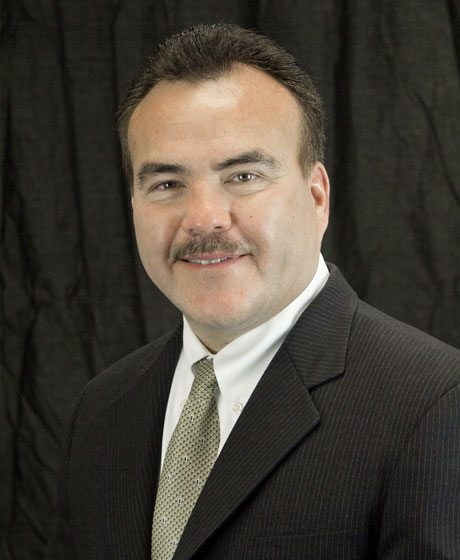
A conversation with …
San Bernardino COE Superintendent Theodore “Ted” Alejandre
s San Bernardino County Superintendent, Alejandre works in collaboration with school districts, other agencies, families and our community partners to provide leadership, advocacy and services to ensure innovative educational practices. Last year, an elementary school in one of his districts experienced a domestic-violence related shooting.
California Schools interviewed Superintendent Alejandre, who was a featured session speaker on school safety at CSBA’s July Leadership Institute, about his thoughts on creating a safe school environment and handling a time of crisis.
What are the different elements that contribute to a safe and supportive school environment?
First of all, I think it is really important to have a positive, welcoming climate. When you establish that kind of a climate that has trusting relationships between adults and students, as well as respecting all students, then you have that full support for supporting and protecting the school. Also, having a caring and compassionate staff that demonstrate overall concern for students is key. You also have to have expectations and policies for student and staff behavior including things like zero tolerance for disruptive behaviors that are violent and for weapons. You have to have clear expectations in place for not tolerating bullying, harassment and intimidation. There also need to be clear and current safety plans for every school.
ad index
Statement of ownership, management and circulation
(Required by 39 U.S.C. 3685)
West Sacramento, CA 95691
West Sacramento, CA 95691
3251 Beacon Boulevard
West Sacramento, CA 95691
Total no. copies (net press run)
7,750
7,500
Paid and/or requested circulation
Paid/requested outside-county mail subscriptions stated on Form 3541
7,197
7,333
Paid in-county subscriptions stated on Form 3541
48
50
Sales through dealers and carriers, street vendors, counter sales, and other non-USPS paid distribution
0
0
Other classes mailed through the USPS
0
0
Total paid and/or requested circulation
7,245
7,383
Free distribution by mail, carrier, or other means, samples, complimentary and other free copies
Total paid and/or requested circulation
0
0
In-county as stated on Form 3541
0
0
Other Classes Mailed through the USPS
0
0
Free distribution outside the mail
0
0
Total free distribution
0
0
Total paid and/or requested circulation
7,245
7,383
Copies not distributed
505
117
TOTAL
7,245
7,383
Percent paid and/or requested circulation
100%
100%
I certify that the statements made by me above are correct and complete:
Kimberly Sellery, Managing Editor

Thanks for reading our Summer 2018 issue!

